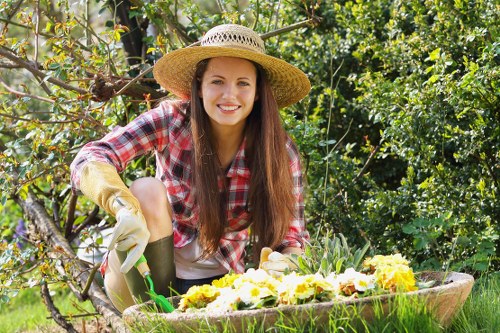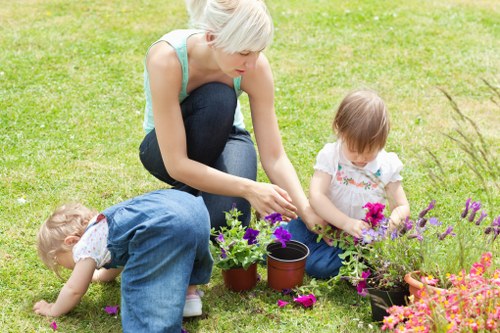Transform Your Space with Landscape Gardening in Notting Hill

Notting Hill, renowned for its vibrant streets and charming architecture, offers a unique backdrop for landscape gardening enthusiasts. Whether you reside in a quaint townhouse or a spacious garden, transforming your outdoor space can significantly enhance both its aesthetic appeal and functionality.
Landscape gardening in Notting Hill involves a blend of traditional and contemporary gardening techniques, tailored to suit the area's distinctive climate and architectural styles. From lush greenery to stylish hardscaping, create a sanctuary that reflects your personal style and complements the neighborhood's vibrant character.
Understanding the local climate is essential when planning your landscape. Notting Hill enjoys a temperate maritime climate, which means mild summers and cool winters. This influences the choice of plants, materials, and gardening strategies to ensure your garden thrives year-round.

Choosing the Right Plants for Your Garden
Selecting the appropriate flora is crucial for a successful landscape garden. In Notting Hill, opt for plants that can withstand the local climate and require minimal maintenance. Consider a mix of perennials, annuals, and shrubs to create a dynamic and evergreen garden.
Perennials such as lavender, geraniums, and hostas provide long-lasting color and structure. These plants return each year, reducing the need for replanting and ensuring your garden remains vibrant throughout the seasons.
Annuals like marigolds and petunias add seasonal flair and can be easily changed to keep your garden fresh and lively. They are perfect for adding splashes of color and filling gaps between more permanent plants.
- Shrubs: Boxwood, hydrangeas, and roses offer texture and form.
- Trees: Flowering cherry trees or ornamental fruit trees can serve as focal points.
- Groundcovers: Ivy, creeping thyme, and moss help prevent weeds and retain moisture.

Designing Your Landscape Layout
A well-thought-out layout is the foundation of effective landscape gardening. Start by assessing the space available and identifying key features such as existing trees, pathways, and garden structures. This will help in creating a balanced and harmonious design.
Consider the following elements when designing your garden layout:
- Zones: Divide your garden into zones based on functionality, such as relaxation areas, dining spaces, and play zones.
- Focal Points: Incorporate elements like water features, sculptures, or striking plant arrangements to draw attention.
- Paths: Curved or straight pathways guide visitors through the garden and connect different areas.
- Symmetry and Balance: Create a sense of order by balancing plantings and structures on either side of main features.
Emphasize sustainability by incorporating native plants and eco-friendly materials. This not only reduces maintenance but also supports local biodiversity.

Incorporating Hardscaping Elements
Hardscaping adds structure and functionality to your landscape garden. Elements such as patios, decking, walls, and pathways enhance the visual appeal and usability of outdoor spaces.
Patios provide a perfect spot for outdoor dining and entertaining. Choose materials that complement your home's exterior, such as natural stone, brick, or timber decking.
Walls and Fences offer privacy and define boundaries. They can be adorned with climbing plants or used as vertical gardens for added greenery.
- Water Features: Fountains, ponds, or waterfalls introduce the soothing sound of water, creating a tranquil environment.
- Lighting: Strategically placed lighting highlights garden features and ensures safety during evening hours.
- Garden Furniture: Comfortable seating and functional furniture enhance the usability of your outdoor space.

Maintaining Your Landscape Garden
Regular maintenance is key to keeping your garden healthy and beautiful. Implement a routine that includes watering, pruning, weeding, and fertilizing to ensure your plants thrive.
Here are some maintenance tips specific to Notting Hill's climate:
Watering: Even though the climate is relatively mild, ensure your plants receive adequate moisture, especially during dry spells. Consider installing a drip irrigation system for efficient watering.
Pruning: Regularly trim shrubs and trees to maintain their shape and encourage healthy growth. Remove dead or diseased branches to prevent the spread of pests.
- Weeding: Keep your garden free from invasive weeds that can compete with your plants for nutrients and water.
- Fertilizing: Use organic fertilizers to enrich the soil and promote robust plant growth.
- Pest Control: Monitor your garden for signs of pests and employ eco-friendly pest control methods to protect your plants.

Seasonal Gardening Tips
Adapting your gardening practices to the changing seasons can enhance the health and beauty of your landscape. In spring, focus on planting new stems and preparing beds for summer growth. Summer requires diligent watering and protection against heat stress. Autumn involves clearing dead foliage and preparing for winter, while winter demands minimal intervention, keeping plants protected from harsh weather.
By following these seasonal tips, your landscape garden in Notting Hill will remain vibrant and resilient throughout the year.
Ready to transform your outdoor space? Contact us today to begin your landscape gardening journey in Notting Hill!